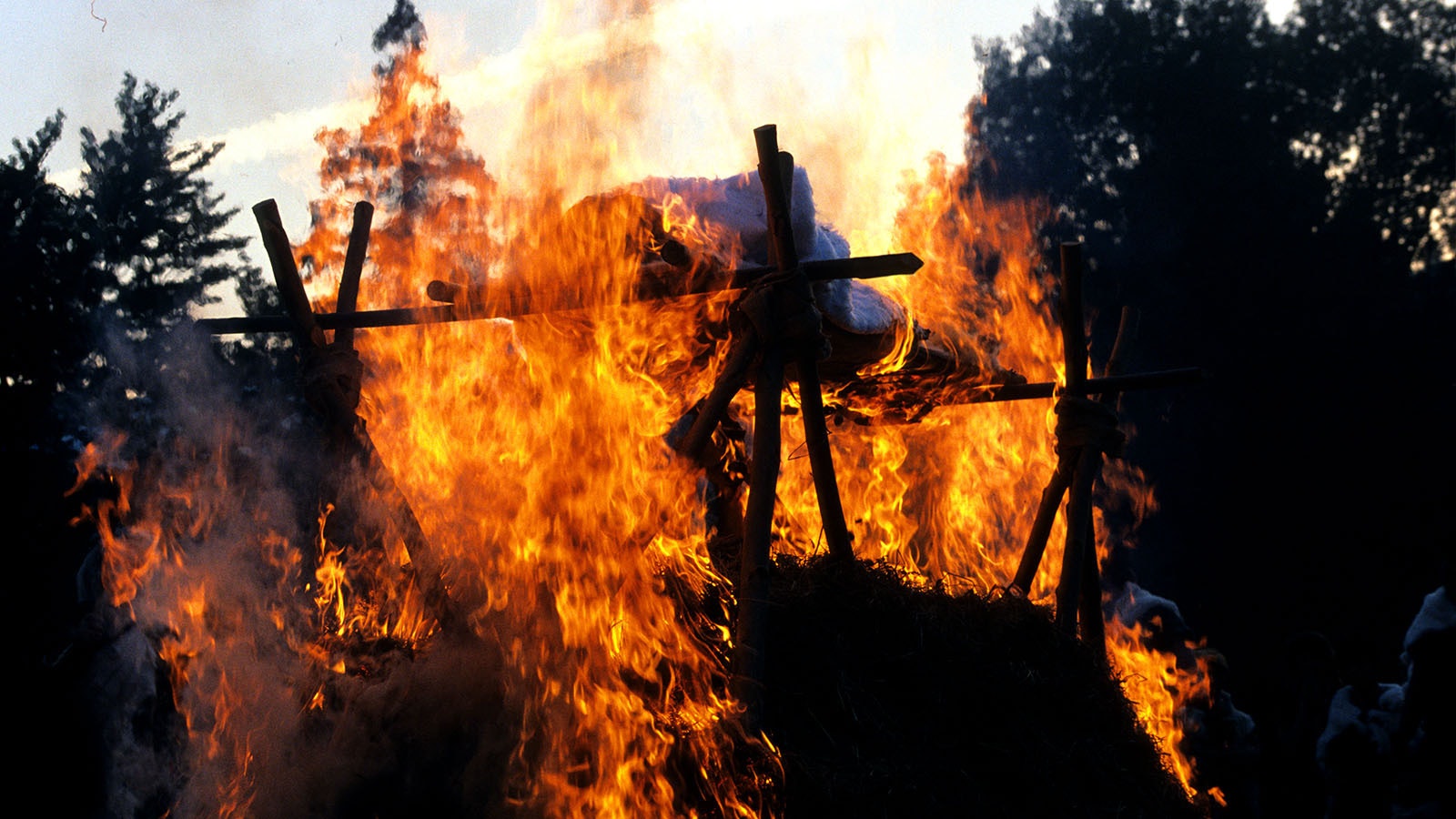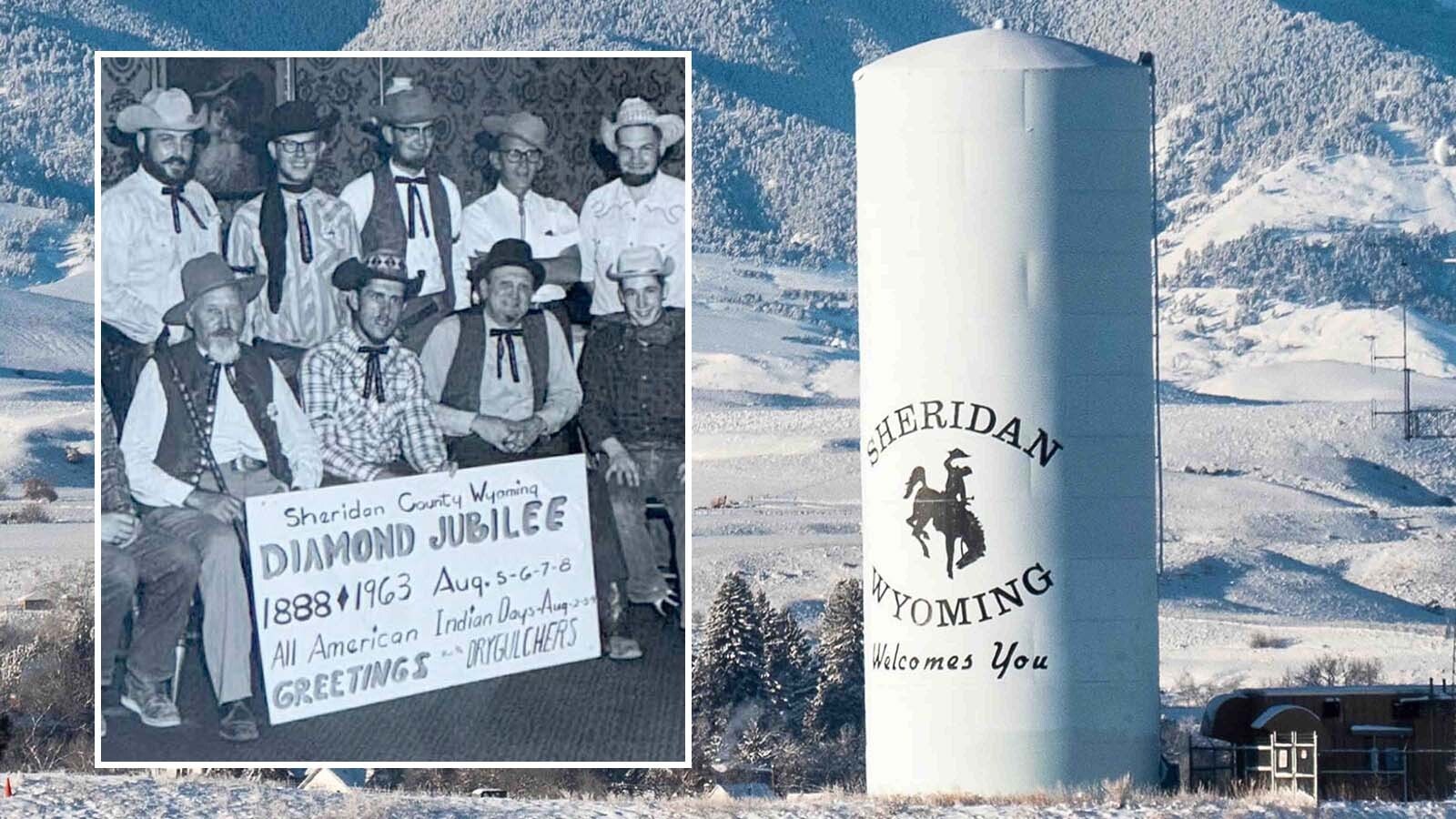There’s a slim chance you legally shuffle off this mortal coil legally with as much flair as Darth Vader in “Star Wars: The Return of the Jedi,” but there’s no way you’ll get to depart this world like King Arthur in “First Knight.”
In the former film, the deceased Sith lord, still in his full black armor, is set ablaze atop a funeral pyre on land. In the latter, the body of the mythical king of Camelot is pushed out to sea in on a floating pyre, then one of his knights sets the vessel ablaze with a flaming arrow.
It’s illegal to burn a body in a floating boat anywhere in the U.S., and a single town in Colorado is the only place in the country where you can legally burn a corpse on a dry-land funeral pyres.
No Wyoming Demand
The popular conception of what are commonly called “Viking” funerals – a flaming longship – aren’t historically accurate anyway, said Joe E. Pray of Pray Funeral Home in Charlotte, Michigan.
“They (Vikings) were more likely to drag the boat ashore and burn it on dry land with the chieftain’s body and his possessions inside, or just bury the entire boat without setting it on fire,” Pray told Cowboy State Daily.
He and his family offer unusual or themed funerals.
And Wyomingites don’t seem interested in Viking funerals, regardless of whether they’re historically accurate or more fanciful, Joey Casada told Cowboy State Daily. He’s the head of the Wyoming Funeral Directors Association and funeral director at Jacoby Funeral Home in Rawlins.
“We haven’t heard of any requests for Viking funerals, open funeral pyres, the human composting or any of those sorts of things,” he said. “Most folks in Wyoming are apparently OK with the standard methods of cremation or burial in a casket.”

Pyres Offered In One Colorado Town
In the United States, open-air cremation is legal only in Crestone, Colorado, according to the US Funerals Online blog. However, only a handful of such pyre services are allowed each year, and they’re exclusively for Crestone residents.
And people might want to think twice about open-air cremation, Pray said.
“I’ve seen it, and it’s actually a gruesome process,” he said. “It’s probably not something I’d want to watch happen to a loved one.”
Original ‘Stairway To Heaven’
Pray said he learned about Viking burial practices during a trip to Norway – and the real thing didn’t match most people’s imaginations.
Contrary to popular belief, the mighty Northmen didn’t honor their dead by setting longships with bodies in them ablaze upon the fjords, he said.
Instead, when a Viking of prominence died, his body and possessions – sometimes including horses and livestock – were placed inside his grounded longship.
“They included all the stuff they figured the deceased would need for his journey to Valhalla,” Pray said.
Norse historians claim that in at least one instance, a deceased chieftain’s concubines were slain so that they, too, could accompany him.
Oftentimes, the entire thing was buried, Pray said.
“There still are some of those burial mounds around Norway,” he said.
In other instances, the ship was burned ashore.
“The smoke from the funeral pyre was called the ‘stairway to heaven,’ so they (Vikings) came up with that long before Led Zepplin did,” Pray said.
It Wouldn’t Have Worked Anyway
Even if Vikings had wanted to burn their dead in floating longships, it wouldn’t have worked, Pray said.
“A boat on the water is just going to burn to the waterline and then stop burning,” he said. “We’ve seen that here on Lake Michigan when some drunk people accidently set their boat on fire. If we know that’s what happens, then the Vikings probably knew that too.”
For those who really want at least a facsimile of Viking honors, Pray said his funeral home offers burial or cremation vessels “that are shaped like a Viking ship.”





